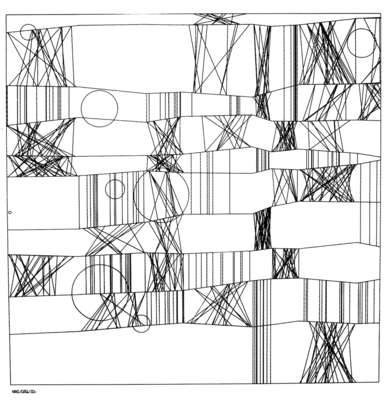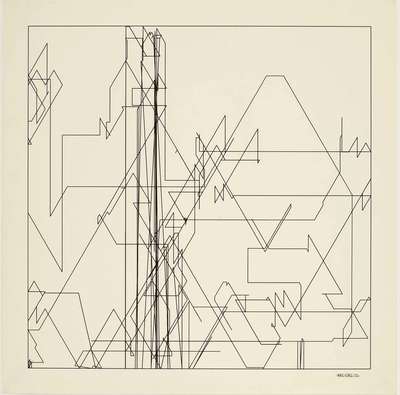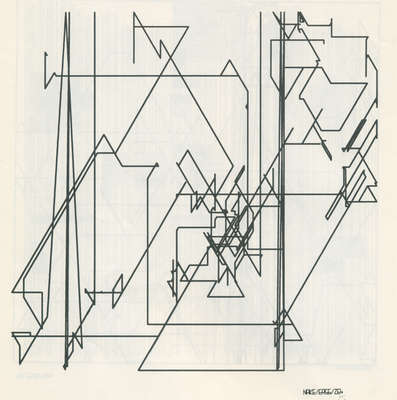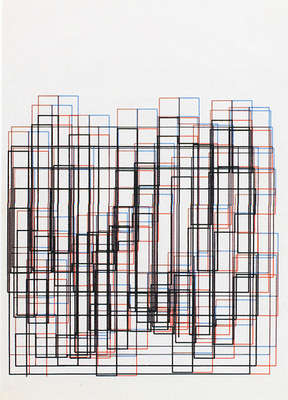The ZUSE Graphomat Z64 was a flatbed drawing machine of high precision. Its engineer, famous computer pioneer Konrad Zuse, had originally intended it to be used for the production of maps and for land registration purposes. Both Georg Nees and Frieder Nake did their first computer art pieces on the Graphomat. This historic fact may be seen as a case of an unintended use of a technical innovation.
’The Graphomat Z64 was fully based on transistor technology. It was controlled by a code that had to be input on punch tape or punch cards. The machine was first presented in 1961 at the Hannover Fair. Even though the first set of machines was ordered within a relatively short period of time, it did not become a great financial success.
The “plotter” was driven by two step motors setting in motion two gears. The digital instructions were translated by the two gears into independent movements in x- and y-direction. Each axis allowed for 32 different speed settings: one for zero, 16 in positive, 15 in negative direction. The combination of two such speeds in x- and y-direction generated a large number of precise lines. All the others had to approximated by a Bresenham-type algorithm.
The machine’s accuracy was quite high: 1/16 mm. The two gears moved a metal box (the “drawing head”) across the paper with the pen up or down. The head could be equipped with up to four pens of different widths and filled with (colored) ink. Any other drawing instrument fitting could also be used. Nake used Rapidograph pens of many different stroke-widths, and with a large palette of colored inks. Two or more pens could be down touching the paper at the same time, a feature that could be used to generate interesting effects.
The Graphomat was the last great contribution by Konrad Zuse to the world of computing machines. He himself had designed all mechanical parts. [Horst Zuse, 2008]
The first version of the Graphomat was a really heavy machine: it is claimed it weighed one ton. Only a few of these machines still exist in museums in Germany. Hardly any is still functioning.









